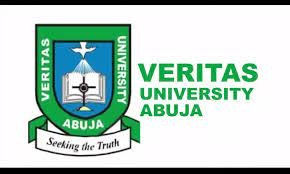Balancing the demands of academic workload with extracurricular activities is a common challenge for high school students. Successfully managing both aspects requires effective time management and a strategic approach to ensure that neither academics nor extracurricular pursuits suffer. This comprehensive guide explores the importance of balancing these two critical areas, the benefits, and strategies for achieving a harmonious blend of academics and extracurricular activities.
Balancing Academic Workload with Extracurricular Activities in High School
High school is an educational institution that serves as the final stage of secondary education in many countries, typically encompassing grades 9 through 12, or ages 14 to 18. High school provides students with a comprehensive education that includes core subjects such as mathematics, science, English, and social studies, as well as elective courses and extracurricular activities. The primary goals of high school are to prepare students for higher education, vocational training, or direct entry into the workforce while fostering personal and social development.
High school is a formative period in a student’s life, characterized by significant academic pressure and numerous opportunities for personal growth through extracurricular activities. Both areas are essential for a well-rounded education and development.
The Importance of Balancing Academics and Extracurricular Activities
Balancing academics and extracurricular activities is crucial for high school students’ overall development. Academics build essential knowledge and skills, while extracurriculars foster personal growth, teamwork, and leadership. This balance helps students manage time effectively, reduces stress, and enhances college applications. By engaging in both, students become well-rounded individuals, ready to face diverse challenges and opportunities in the future. Prioritizing a healthy balance ensures academic success and personal fulfillment The following are the benefits of of balancing both:
Academic Achievement
Academic performance remains a priority for high school students as it forms the foundation for future educational and career opportunities. High grades and strong academic records are crucial for college admissions and scholarships. Moreover, a solid academic background provides the knowledge and skills necessary for personal and professional success.
Personal Development
Extracurricular activities, ranging from sports to arts to volunteer work, play a vital role in a student’s personal development. These activities foster essential life skills such as leadership, teamwork, time management, and communication. Additionally, they provide a platform for students to explore their interests and passions, which can lead to lifelong hobbies or career paths.
Benefits of Balancing Academic Workload with Extracurricular Activities in High School
Balancing academics and extracurricular activities offers numerous benefits:
-
Enhanced Time Management Skills
Students who successfully balance academics and extracurriculars often develop superior time management skills. Learning to prioritize tasks, meet deadlines, and allocate time effectively are skills that benefit students throughout their lives.
-
Improved Mental and Physical Health
Engaging in extracurricular activities can be a great way to relieve stress and maintain physical health. Sports, in particular, promote physical fitness, while arts and other creative activities can improve mental well-being. Balancing these with academics ensures students are not overwhelmed by their studies alone.
-
Better College Applications
Colleges and universities look for well-rounded applicants who have excelled academically and in extracurricular activities. A balanced approach demonstrates students’ ability to manage multiple responsibilities and showcases their diverse talents and interests.
-
Social Skills and Networking
Extracurricular activities provide opportunities for students to interact with peers with similar interests, leading to developing social skills and valuable friendships. These networks can be beneficial both personally and professionally in the future.
Strategies for Balancing Academics and Extracurricular Activities
Balancing academics and extracurricular activities requires a strategic approach. Here are several strategies to help students achieve this balance:
1. Prioritize and Plan
Set Priorities: Students should identify their academic and extracurricular priorities. This involves recognizing the most important activities and aligning them with their long-term goals. For instance, if a student aspires to pursue a medical career, science clubs or volunteer work in healthcare settings might take precedence.
- Create a Schedule: Developing a detailed schedule that includes both academic and extracurricular commitments is crucial. Use planners or digital calendars to allocate specific time blocks for studying, attending classes, participating in extracurricular activities, and leisure. This helps ensure all tasks are accounted for and deadlines are met.
- Set Realistic Goals: Setting achievable academic and extracurricular goals helps in maintaining focus and motivation. Break down larger tasks into smaller, manageable ones to avoid feeling overwhelmed. Regularly review and adjust goals as needed to stay on track.
2. Develop Efficient Study Habits
Find an Optimal Study Environment: Identify a conducive study environment that minimizes distractions. This can be a quiet corner at home, a library, or a study group with like-minded peers. A comfortable and organized workspace enhances concentration and productivity.
- Utilize Effective Study Techniques: Adopt study techniques that maximize learning efficiency. Techniques such as the Pomodoro Technique (working in short, focused intervals), active recall, and spaced repetition can improve retention and understanding of the material.
- Stay Organized: Keep study materials and assignments organized. Use folders, binders, or digital tools to categorize notes, assignments, and important documents. Staying organized reduces stress and saves time when looking for materials.
3. Make Use of School Resources
- Seek Academic Support: Take advantage of school resources such as tutoring centers, study groups, and teacher office hours. Seeking help when needed ensures that students do not fall behind in their academics.
- Utilize Counseling Services: School counselors can guide managing time, setting priorities, and coping with stress. They can also offer insights on balancing academics with extracurricular commitments and help with college and career planning.
4. Practice Self-Care
- Maintain Physical Health: Regular exercise, a balanced diet, and adequate sleep are essential for maintaining physical health and energy levels. Physical fitness improves concentration and overall well-being, making it easier to manage multiple responsibilities.
- Prioritize Mental Health: Engage in activities that promote mental well-being, such as mindfulness, meditation, or hobbies that bring joy. Taking breaks and allowing time for relaxation is crucial to prevent burnout.
5. Communicate and Collaborate
- Engage with Teachers and Coaches: Maintain open communication with teachers and coaches about your academic and extracurricular commitments. They can provide support and accommodate schedules when conflicts arise.
- Involve Family: Discuss your schedule and commitments with family members. They can offer support, provide reminders, and help manage time effectively.
6. Evaluate and Adjust
- Regularly Assess Balance: Periodically evaluate your balance between academics and extracurricular activities. Reflect on what is working well and what needs adjustment. This continuous assessment helps in making necessary changes to maintain a healthy balance.
- Be Flexible: Understand that unexpected events or changes in priorities may require adjustments to your schedule. Being flexible and adaptable is essential for maintaining balance.
Real-Life Examples
Example 1: The Student-Athlete
Sarah is a high school junior who excels academically and is also a star player on the school’s basketball team. To balance her academic workload with her rigorous training schedule, Sarah uses a planner to organize her time. She dedicates specific hours each day to study and completes assignments ahead of deadlines. On weekends, she reviews her notes and prepares for upcoming tests. Sarah also ensures she gets enough rest and follows a healthy diet to maintain her energy levels. Her commitment to both academics and sports has made her a well-rounded student, admired by peers and teachers alike.
Example 2: The Creative Enthusiast
James is passionate about theater and is heavily involved in school plays and drama club activities. Balancing his academic responsibilities with rehearsals and performances is challenging but manageable through effective time management. James schedules his study sessions around rehearsal times and seeks academic support from teachers when needed. He also practices mindfulness and relaxation techniques to manage stress. His involvement in theater has enhanced his public speaking and teamwork skills, which have positively impacted his academic presentations and group projects.
Challenges and Solutions
Challenge 1: Overcommitment Many students face the challenge of overcommitting to too many activities, leading to burnout and decreased performance in both academics and extracurriculars.
Solution: Students should prioritize their commitments and focus on a few activities that align with their interests and goals. Learning to say no to additional commitments is essential for maintaining balance and ensuring high performance in chosen activities.
Challenge 2: Time Management Effective time management is a common challenge, especially with the increasing demands of high school.
Solution: Developing a structured schedule and adhering to it is crucial. Utilizing time management tools such as planners, calendars, and apps can help students stay organized and meet deadlines. Allocating specific time blocks for different tasks and sticking to them minimizes procrastination and enhances productivity.
Challenge 3: Stress and Anxiety The pressure to excel academically while being actively involved in extracurricular activities can lead to stress and anxiety.
Solution: Students should prioritize self-care and seek support when needed. Engaging in stress-relieving activities, maintaining a healthy lifestyle, and seeking help from counselors or mental health professionals can significantly reduce stress levels. Open communication with teachers, coaches, and family members also provides a support system to navigate through challenging times.
Closing Remarks
Balancing academic workload with extracurricular activities in high school is a challenging but achievable goal. It entails effective time management, prioritization, and a strategic approach to ensure success in both areas. The benefits of maintaining this balance are manifold, including enhanced time management skills, improved mental and physical health, stronger college applications, and better social skills. By adopting the strategies outlined in this article, I believe students can handle their high school years efficiently, achieving a harmonious blend of academic excellence and personal growth through extracurricular pursuits. Don’t forget to share your success stories here to help another student.









